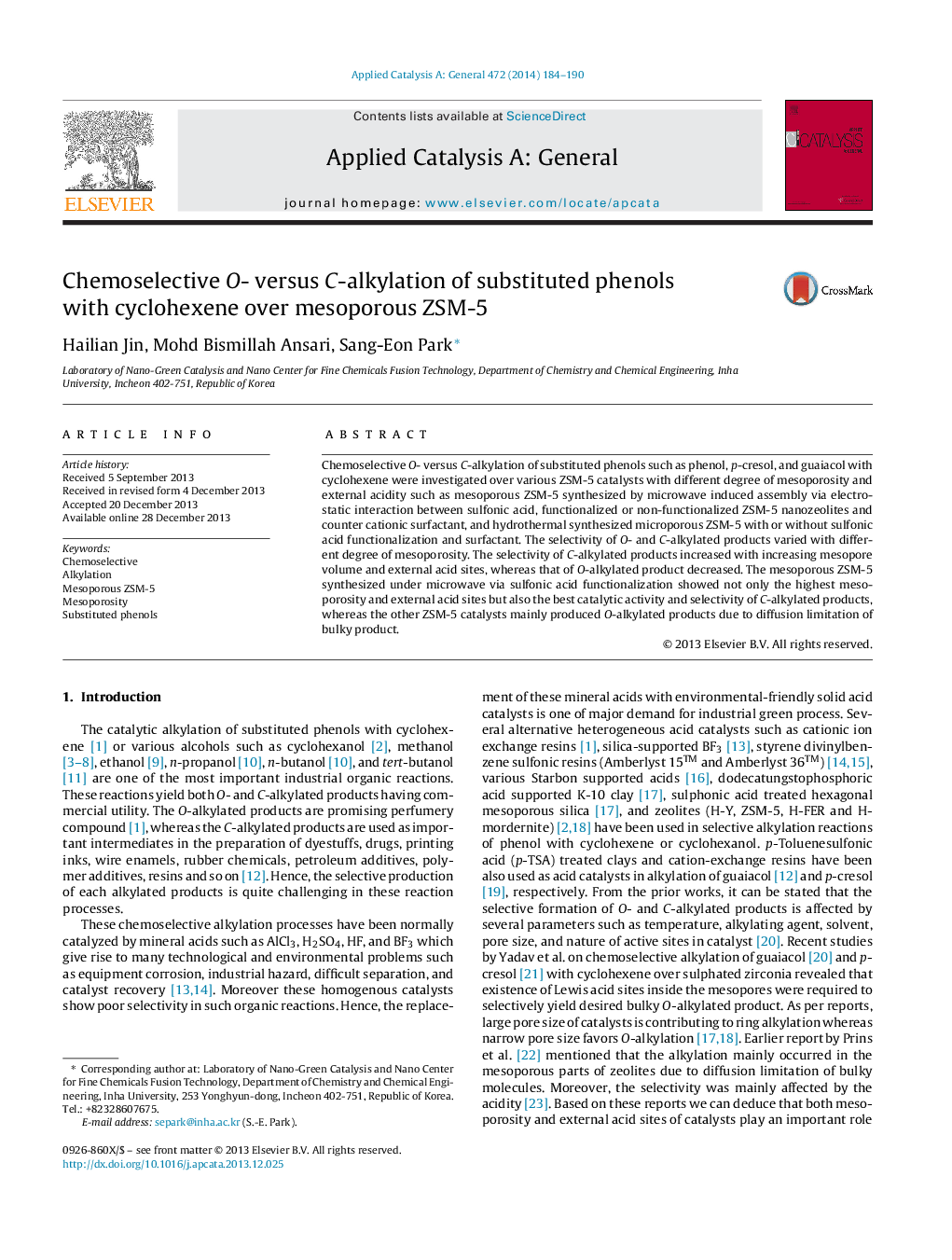| Article ID | Journal | Published Year | Pages | File Type |
|---|---|---|---|---|
| 39803 | Applied Catalysis A: General | 2014 | 7 Pages |
•Selectivity of O- and C-alkylated products varied with controllable mesoporosity.•Enhanced mesoporosity affected the external acid sites.•Selectivity of C-alkylated products increased with increase in external acid sites.•C-alkylated products are predominant product over mesoporous ZSM-5.•Microporous ZSM-5 mainly showed O-alkylated products due to diffusion limitation.
Chemoselective O- versus C-alkylation of substituted phenols such as phenol, p-cresol, and guaiacol with cyclohexene were investigated over various ZSM-5 catalysts with different degree of mesoporosity and external acidity such as mesoporous ZSM-5 synthesized by microwave induced assembly via electrostatic interaction between sulfonic acid, functionalized or non-functionalized ZSM-5 nanozeolites and counter cationic surfactant, and hydrothermal synthesized microporous ZSM-5 with or without sulfonic acid functionalization and surfactant. The selectivity of O- and C-alkylated products varied with different degree of mesoporosity. The selectivity of C-alkylated products increased with increasing mesopore volume and external acid sites, whereas that of O-alkylated product decreased. The mesoporous ZSM-5 synthesized under microwave via sulfonic acid functionalization showed not only the highest mesoporosity and external acid sites but also the best catalytic activity and selectivity of C-alkylated products, whereas the other ZSM-5 catalysts mainly produced O-alkylated products due to diffusion limitation of bulky product.
Graphical abstractFigure optionsDownload full-size imageDownload high-quality image (160 K)Download as PowerPoint slide
